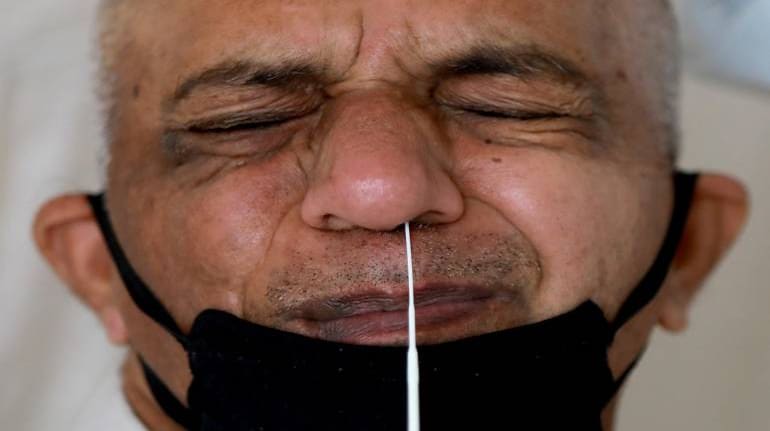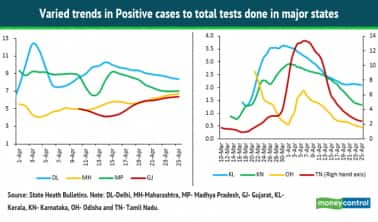



Aakanksha Arora, Mahima and Aasheerwad Dwivedi
The COVID-19 outbreak has reached every continent on Earth, except Antarctica. The disease has upended life across the globe, shutting down entire countries within months. One specific statistic i.e. proportion of people tested positive out of total tests performed lies at the heart of understanding the spread of the pandemic. This number not only tells us about the prevalence of the infection, but also about who are actually being tested.
An insightful way to analyse this number is to interpret it in terms of sensitivity and specificity of the testing criteria and prevalence of the virus. At any point of time, who will be tested and who will not, is dependent on specificity of testing criteria. During the early stages of any outbreak the testing criteria usually has high specificity, i.e. only people with very specific conditions are eligible for testing. In the case of COVID-19, these conditions include international travel history, high fever, dry cough, etc. Due to high specificity, fewer people get tested.
On the other hand, high sensitivity in testing criteria attempts to capture the majority of the population which helps in containment interventions. To get a deeper insight, we use Bayes’ theorem to formulate ‘Proportion of tests positive’ in terms of sensitivity, specificity and prevalence.

All the efforts related to controlling the pandemic can be seen as an attempt to drive this ratio down. There are only two ways of doing so — lowering the prevalence of the infection and/or by reducing the specificity of testing criteria i.e. testing more and more population.
Most countries, including India, started with ‘highly specific’ testing criteria and broadened it gradually. The ‘Proportion of tests positive’ would be higher in a ‘highly specific’ testing criteria as only the people who possess specific pre-requisites would be tested. As we start testing more population including asymptomatic people, this ratio reduces.
In India, the percentage of positive cases to total tests done was around 1-2 initially. It started increasing over time as testing criteria was limited to high risk group. It is a generally noted international trend as well that this ratio increases before it falls or flattens. The testing criterion was gradually broadened, and a massive increase in testing was also brought about, after which the positive test percentage has flattened. However, it has not yet reduced. One possible explanation of this could be that the prevalence of infection has not declined that sharply, counter-balancing the wide expansion in testing (reducing specificity). In the last three weeks, the number of tests in India rose from 100,000 to over 600,000.

However, the picture varies widely across states. While the positive cases to test ratio is decreasing sharply for Tamil Nadu, Kerala, Odisha and Karnataka, it is still increasing in Maharashtra and Gujarat. The ratio, although high, is falling slowly in Delhi and Madhya Pradesh.

On the basis of the Bayesian framework, it seems that the prevalence of infection has decreased in Kerala, Karnataka, Odisha and Tamil Nadu — whereas in Maharashtra, Gujarat, Madhya Pradesh and Delhi the prevalence seems to have still not declined, which is counterbalancing the decreased specificity of the tests being conducted.
We must also note that states are testing at different rates, with Delhi conducting more tests per million in comparison to other states. Of course, for an accurate statistical analysis, many other factors, such as demography, mobility, health infrastructure and many unknowns need to be accounted for.
We have been able to prevent the virus spread to grow exponentially in India. However, states are at different stages in terms of reduction in the prevalence. In this light, rather than ‘one size fit all’ policy, decision needs to be taken at regional levels. The government’s decision to identify hotspot districts and containment zones, and take decisions accordingly is a step in right direction.
Aakanksha Arora is Deputy Director in Ministry of Finance, Mahima is Consultant in Ministry of Finance, and Aasheerwad Dwivedi is Assistant Professor, Shri Ram College of Commerce, New Delhi. Views are personal.
Discover the latest Business News, Sensex, and Nifty updates. Obtain Personal Finance insights, tax queries, and expert opinions on Moneycontrol or download the Moneycontrol App to stay updated!
Find the best of Al News in one place, specially curated for you every weekend.
Stay on top of the latest tech trends and biggest startup news.